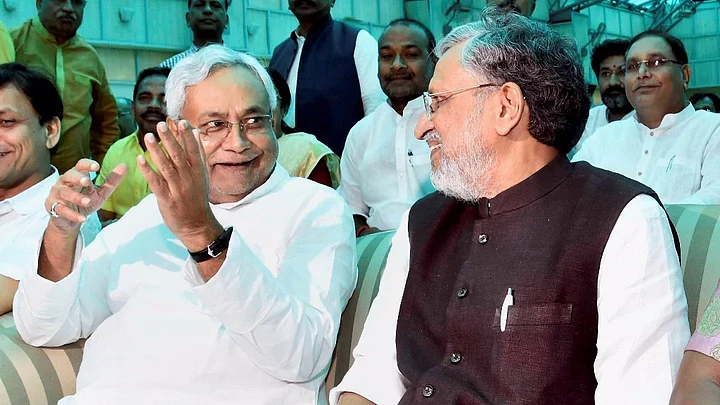Freshly reappointed as Chief Minister of Bihar for the sixth time, Nitish Kumar now faces a floor test on 28 July to prove his majority in the state assembly. With the JD(U) already having 71 seats, and the BJP – Kumar’s new partners in the grand alliance 2.0 – having 53 seats, Kumar can easily win a majority. Or so it seems.
Of the 243 seats in the assembly, the ruling party or coalition needs a total of 122 seats.
The JDU-BJP combine form a total of 124 seats, two over the required number. But five Muslim MLAs and 11 Yadav MLAs could flip the game for Kumar.
These 16 MLAs have reportedly opposed Kumar’s decision to dissolve the mahagathbandhan – which won the people’s mandate in 2015 with a thumping majority – and ally with the BJP.
Former JDU chief Sharad Yadav has registered his disapproval by his conspicuous absence from Kumar’s swearing in ceremony on 27 July. Senior JDU leader Anwar Ali has also voiced his discontent over Kumar’s decision. “My conscience does not allow me to support Nitish Kumar’s decision to form the government with the BJP,” he told ANI.
Incidentally, while Kumar has been Chief Minister of the state since 2005, his popularity is not purely electoral, finds an IndiaSpend analysis.
Kumar’s JDU has only done better than the Congress in electoral popularity. The BJP, as a matter of fact, has been the most popular party in the state, even before the 2014 Modi wave. No more than 17 of a 100 voters have chosen to vote only for JDU, IndiaSpend reports, after an analysis of results over six elections since 2004.
Of every 100 Biharis, roughly 37 voted only for the BJP, 30 only for RJD, about 17 and not more for the JDU, and 10 only for the Congress.
Kumar has effectively been able to “manoeuvre electoral alliances” and take “advantage of India’s first-past-the-post electoral system,” the report adds.
The political storm brewing in Bihar finally came to head on 26 July, with Chief Minister Nitish Kumar resigning, and consequently dissolving the grand alliance between JDU-RJD-Congress in the state after only two years.
The crisis began with Kumar’s JDU demanding Tejashwi Yadav’s resignation after the Deputy CM and RJD chief Lalu Prasad Yadav’s 28-year-old son was hauled up by the CBI in a corruption case. The standoff between the two factions of the alliance finally culminated in Kumar stepping down as CM and allying with the BJP instead.
The JDU and the BJP were allies for 17 years until 2014, when the BJP declared Modi as it’s PM candidate, sidelining Kumar. After a break in relations for two years, the two parties are back together again.
(We all love to express ourselves, but how often do we do it in our mother tongue? Here's your chance! This Independence Day, khul ke bol with BOL – Love your Bhasha. Sing, write, perform, spew poetry – whatever you like – in your mother tongue. Send us your BOL at bol@thequint.com or WhatsApp it to 9910181818.)
